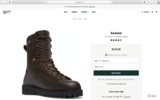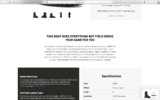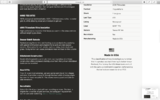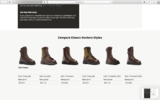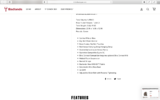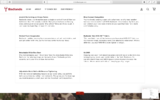Dave, how about doing a follow-up on this hunt explaining in detail how you prepared for it? There is a significant difference in latitude, altitude and unexpected weather conditions from where you live to where you hunted. I think a lot of others would benefit from knowing what you did, and what you packed. Besides that, this not being your first rodeo gave you some valuable incite that needs to be shared with those contemplating an Elk hunt.
We had 2+ years to plan and prepare for this hunt. Since this was Iggy's first big time hunt out west, we started slowly getting him geared up and ready for the hunt. Iggy had a pair of uninsulated Cabela Meindl boots that are perfect for Montana hunting, if temps are above freezing. For colder weather, I suggested a 400 gram insulated boot from Danner or Kenetrek. Iggy opted for the Danner (
https://www.danner.com/men/hunt/santiam-8-brown-400g.html ) and was quite happy with them. Getting these boots two years ahead of time allowed for some break in period. The airbob sole is really good as it sort of self cleans in the snow and is quiet when walking on rocks.
Several weeks ahead of the hunt, I was watching the weather forecasts. As it got closer to the hunt dates, the forecasted low temps went from 20F to -18F. I actually texted Zane and asked him if I should bring my Kenetrek snowpacs. I am not crazy about hiking in the snowpacs, but they will keep the feet warm with the thick felt liners. Zane advised to not bring them, as the feet will sweat in them from hiking and then get cold. A week before a hunt in extreme cold, I start rubbing stick antiperspirant on my feet, so they won't sweat. That's an old Indian trick, I think.
Coming from sea level where I live to the higher altitudes is a challenge. I do some running and do a bunch of squats with a weight bar. I also have a 50 pound weight vest that I wear on the StairMaster at the gym. COVID complicated this part of my preparation, but I was in decent shape and ended up having an easy hunt. But you do want to get in shape. Most of the hunting is done above 5500 ft and can go to 9,000+.
On many of my Montana elk hunts, when it's above freezing, we usually don't wear long underwear. It can be a little chilly in the morning, but when you start hiking you warm up fast. You are usually peeling off layers of clothing when hiking and when you stop to glass, you add them back on. I will carry my zip up rain pants in my backpack and can put them on as an extra layer if it's windy and I start to get cold.
A good, small backpack with a padded waist belt is essential. The waist belt helps to minimize the movement while riding a horse. A Badlands Superday pack (
https://www.badlandsgear.com/products/superday ) is about the right size. I have a Badlands 2200, which is just a little larger bag.
We had to bring a sleeping bag, but since we were hunting from the cabin, I brought my light bag, which is a Mountain Hardware synthetic bag. Synthetics will dry out quicker if they get wet. Temp ratings on sleeping bags are notoriously misleading and a lot of research is required. I have two other sleeping bags that are goose down bags and I have never been cold in them, even in sub zero conditions. They are actually too warm and I usually burn up in them and have to unzip them.
Since we knew we'd be hunting in some sub zero temps, I brought several layers of everything. I wore some thin, tall compression socks that seem to help with lower leg circulation. Pulled on some mid-weight Cabela's synthetic long johns and then pulled on a mid-weight set of merino wool socks. For the really cold weather, I break out the Filson Mackinaw Wool pants. You'll notice that all the elk guides are big believers in wool. After lacing up my Cabela's/Danner boots, the Kuiu gaiters go on.
Up top, I had a synthetic T-shirt, a Cabela's mid-weight long underwear shirt, a Pendleton wool shirt and a Filson wool vest. Over all this, I have a lightweight Sitka jacket. I have a t-shirt material orange vest I put on over the Sitka jacket. That way when I take the big outter jacket off, I am good and legal. The final outer layer was a Cabela's jacket that I rarely use because it's too warm and too bulky and another orange vest. But I brought it for this trip and actually had to wear it on the plane because I couldn't fit it into my bag and keep under the 50 pound limit. One thing I learned about this jacket (I've had if for 20 years, but rarely wear it) is that material is soft and quiet when it's not too cold, but at -10F it sounded like I was wrapped in a blue plastic tarp. The material got quite stiff and quite noisy. I'll be looking for something else when I go to BC next year.
For the snowy days, I wear the ball cap so the bill of the hat gives some protection and then pull a Carhartt knit cap over it. It's a look I perfected! I also pulled the hood of the jacket up. The Cabela's jacket tailors the side of the hood back so it doesn't obstruct your peripheral vision.
For gloves, I've used various insulated gloves over the years and my fingers always get cold. I bought some insulated mittens about 10 years ago that are XL and can fit over my gloves. They are a game changer for keeping hands warm. On this hunt, we also used the chemical hand warmers on the super cold days.
I think the last photo was day 4 or 5. It had warmed up to a balmy 20F and I traded in the Filson wool pants for the Kuiu attack pants. At this point, we were cruising in a warm truck, looking for deer.
